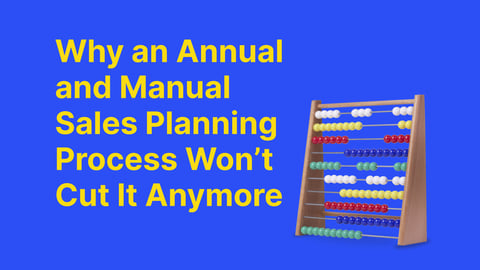In our latest LinkedIn Live Event, we invited cross-functional leader Ryan D’Souza for a lively discussion on how to identify, understand the source and minimize the impact of revenue volatility and prime your organization for repeatable and predictable revenue growth.
Here are four key takeaways from this informative conversation. Want to listen to the full episode? It's now available on Spotify.
1. The customer journey needs an owner
When entering an organization as a leader, or as a consultant, Ryan starts with a microscopic examination of the customer journey, from first brand touch to building customer advocates. Ryan shared that digging into how customers convert throughout their journey can shine a light on friction points, whether in the sales cycle or in transitioning a client to an advocate.
Ryan emphasized that organizations should consider appointing a 'customer journey owner'. This customer journey owner ensures a smooth, consistent experience from start to end, which ultimately drives predictable and repeatable revenue.
2. Don’t underestimate the three Ps
Embrace the three Ps – People, Processes, and Politics. Understanding these three aspects within the first month can give you profound insight into any organization’s operation.
Ryan emphasized that understanding culture and the people is critical to successfully affecting change. Ryan acknowledged that one of the biggest challenges with evaluating a business is what he calls “founderitis”, where a founding senior leader wants to be involved in every aspect of the business. Additionally, when people feel they personally are under the microscope or their work is being assessed, they become naturally territorial and protective of their job.
You need to break down these barriers by establishing trust and credibility. Position yourself as a helper and problem-solver, rather than someone who is there to point out flaws or mistakes. Ryan emphasized the value of being an extra set of hands, someone who is going to relieve some of the pressures and improve processes. When you’re in tune with the 3 Ps you can get better understanding and alignment on goals and strategies.
3. Sales and Marketing are a power couple
An organization heading in one direction, together, has a higher probability of reaching its target. Every organization, from the start-up next to the multinational corporation, shares a common goal: growth. how the path to growth is structured is complex, often disconnected, and sometimes even conflicting. And therein lies potential volatility.
For example, when a business goal is to improve profitability but the sales organization is measured on quantity of deals, there is an inherent disconnect.
Similar conflicts can arise between marketing and sales, each with its own unique metric for success. One aims for greater visibility and reach in the market, the other looks at sales pipe conversions. How can you balance both?
Let’s go back to the idea of the Customer Journey Owner. Their purpose is to align all these varying metrics towards a unified vision, resulting in a seamless customer journey.
Historically, the divide between sales and marketing is heightened due to reporting structures and different areas of focus. However, having a Customer Journey Owner dedicated to revenue and customer growth can bridge this gap.
Ryan emphasized the need for communication and collaboration to strengthen the alignment between sales and marketing and reduce conflicting metrics and incentives that may create tension. Including the non-traditional approach of offering variable pay to certain marketing roles. Watch the episode to get his full take on why this is important.
4. Optimize Your Sales Tech Stack
On average, sales organizations use between 4 and 10 pieces of software. This isn’t too surprising.
Over time it's easy for a company or department to accumulate a potpourri of technology. The trick to squeezing value out of your tech stack is understanding what your business needs today, optimizing your most valuable tools, and then filling any gaps.
Tech can play a pivotal role in controlling revenue volatility - especially related to "dirty data" and simplifying processes with error-prone and onerous tasks. Leveraging what you already have instead of looking for a quick fix can result in efficiency, reduced costs and improved productivity.
The contributors to revenue volatility can be identified with technology that offers data-driven insights throughout the customer journey to improve and smooth out sales performance. The trick is knowing what tool fits your business model the best.
Recap: Ryan’s Recipe for Minimizing Revenue Volatility
- Understand the existing culture before implementing changes.
- Establish a dedicated owner for the customer journey.
- Ensure alignment of goals and objectives throughout the organization.
- Optimize the technology you have, before adding new tools.
- Focus on effective communication and training in a remote work environment.
From my conversation with Ryan, it is clear that an alignment across people, processes, technology, and an in-depth understanding of company politics can lead to minimized revenue volatility and repeatable growth.
Have you check out our last conversation with Amii Stephenson on leading a sales team through uncertainty? Listen to it on Spotify and Apple or watch it on YouTube.
We go Live on LinkedIn every month. Follow Varicent to get updates on the details of the next episode.





